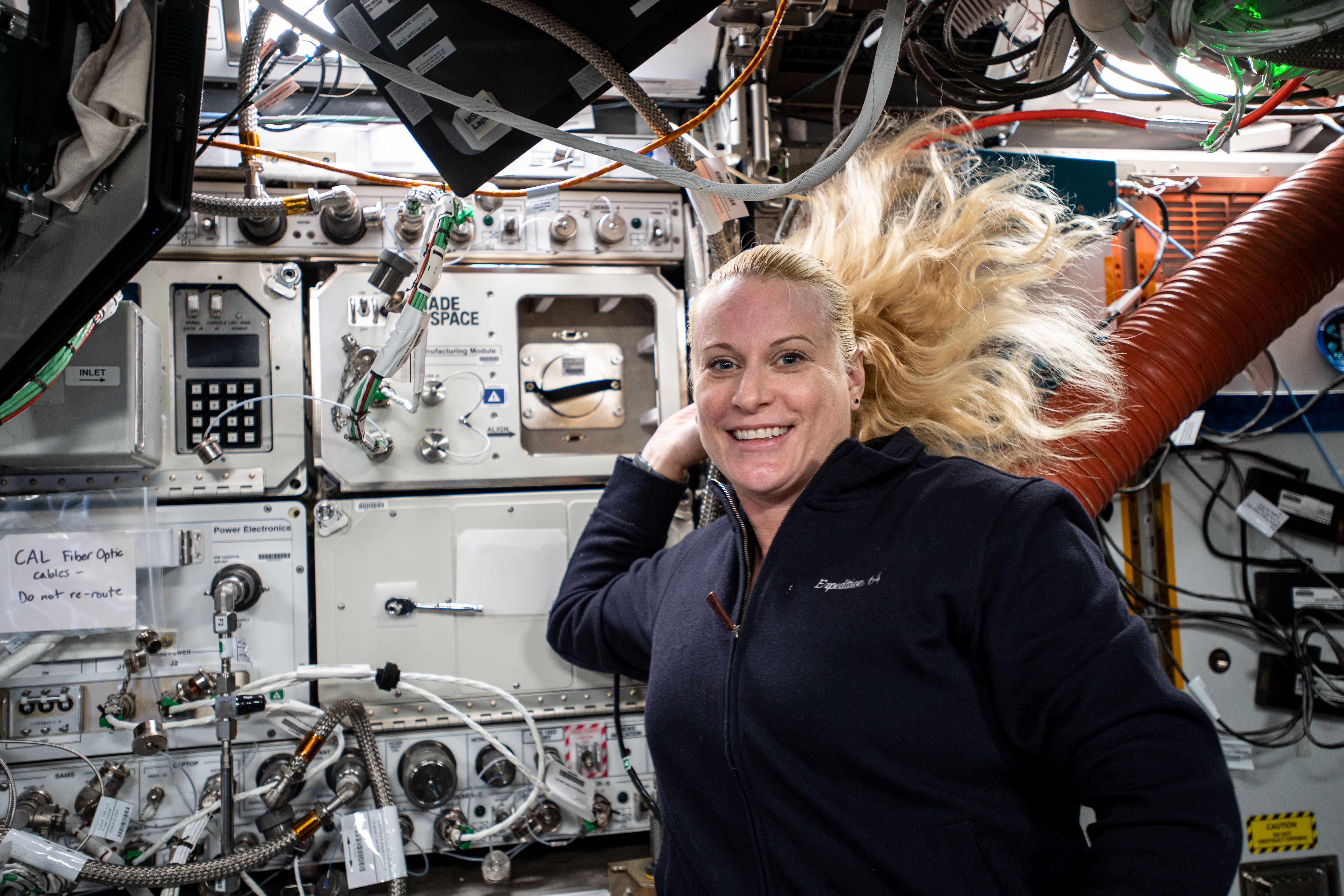
Made In Space keeps notching off-Earth manufacturing milestones.
The Florida-based company just built its first ceramic part in orbit, 3D printing a single-piece turbine "blisk" (short for "bladed disk") on board the International Space Station (ISS).
"This is an exciting milestone for space-enabled manufacturing and signals the potential for new markets that could spur commercial activity in low Earth orbit," Made In Space president Tom Campbell said in a statement last week.
Related: 3D printing in space: A photo gallery

The blisk and some simpler test objects were fabricated by Made In Space's Ceramic Manufacturing Module (CMM), which arrived at the space station aboard Northrop Grumman's robotic Cygnus cargo vehicle in October.
The microwave-sized CMM makes parts via "stereolithography," which uses an ultraviolet (UV) laser and UV-curable resin. This 3D-printing technique can make complex objects such as turbine blisks with a high degree of accuracy, Made In Space representatives said.
The CMM is a pathfinder, a machine designed to demonstrate that intricate and economically important ceramic components can be made in microgravity for use here on Earth. And Made In Space thinks there's good reason to take the manufacture of such objects off the planet.
Get the Space.com Newsletter
Breaking space news, the latest updates on rocket launches, skywatching events and more!
"Manufacturing turbine components in microgravity could produce parts with better performance, including higher strength and lower residual stress, due to a reduction in defects caused by gravity, such as sedimentation and composition gradients," company representatives wrote in a description of the CMM this past September. "This technology demonstrates potential use of the space station for unique manufacturing capabilities which could increase commercial utilization of ISS."
The blisk and the coupons will come back down to Earth for inspection and testing next month aboard a SpaceX Dragon cargo capsule — the one that just arrived at the ISS on Dec. 7.
Made In Space, a subsidiary of the space-solutions company Redwire, had already launched four machines to the ISS before the CMM — one pathfinding 3D printer, a commercial 3D printer called the Additive Manufacturing Facility (AMF), a commercial polymer recycler and a device that manufactures the high-value optical fiber ZBLAN.
The recycler is designed to convert bags and other plastic trash into "feedstock" that can be used by the AMF printer. Both of these machines are still in operation on the ISS. The ZBLAN project is also ongoing; it's investigating the feasibility of making ZBLAN in orbit and selling it down here. (ZBLAN has the potential to be far superior to traditional silica-based optical fiber, but gravity-induced imperfections make the stuff hard to manufacture on Earth, Made In Space representatives have said.)
Made In Space has other, more ambitious projects in the works as well. Last year, NASA awarded the company $73.7 million to give its free-flying space-manufacturing platform, known as Archinaut, a test in Earth orbit. The Archinaut One demonstration mission could launch atop a Rocket Lab Electron booster as soon as 2022.
Mike Wall is the author of "Out There" (Grand Central Publishing, 2018; illustrated by Karl Tate), a book about the search for alien life. Follow him on Twitter @michaeldwall. Follow us on Twitter @Spacedotcom or Facebook.
Join our Space Forums to keep talking space on the latest missions, night sky and more! And if you have a news tip, correction or comment, let us know at: community@space.com.

Michael Wall is a Senior Space Writer with Space.com and joined the team in 2010. He primarily covers exoplanets, spaceflight and military space, but has been known to dabble in the space art beat. His book about the search for alien life, "Out There," was published on Nov. 13, 2018. Before becoming a science writer, Michael worked as a herpetologist and wildlife biologist. He has a Ph.D. in evolutionary biology from the University of Sydney, Australia, a bachelor's degree from the University of Arizona, and a graduate certificate in science writing from the University of California, Santa Cruz. To find out what his latest project is, you can follow Michael on Twitter.









